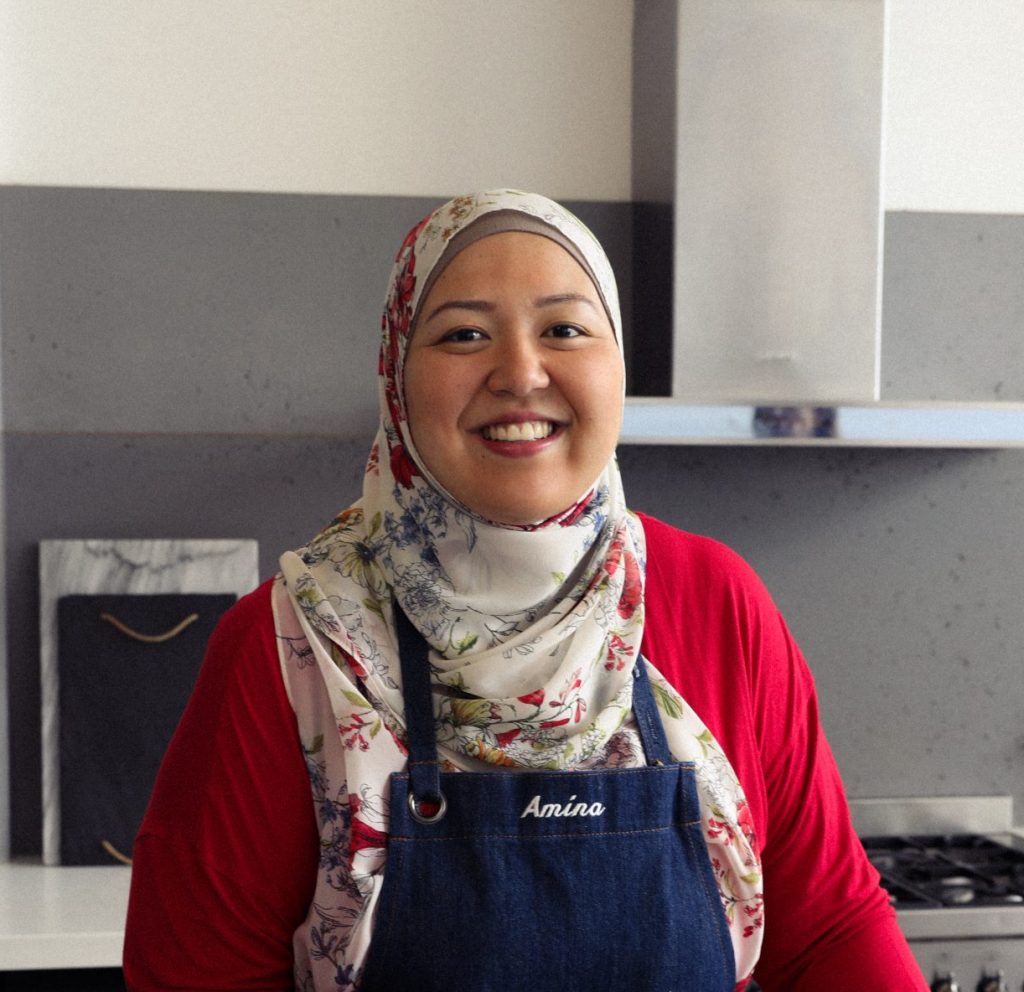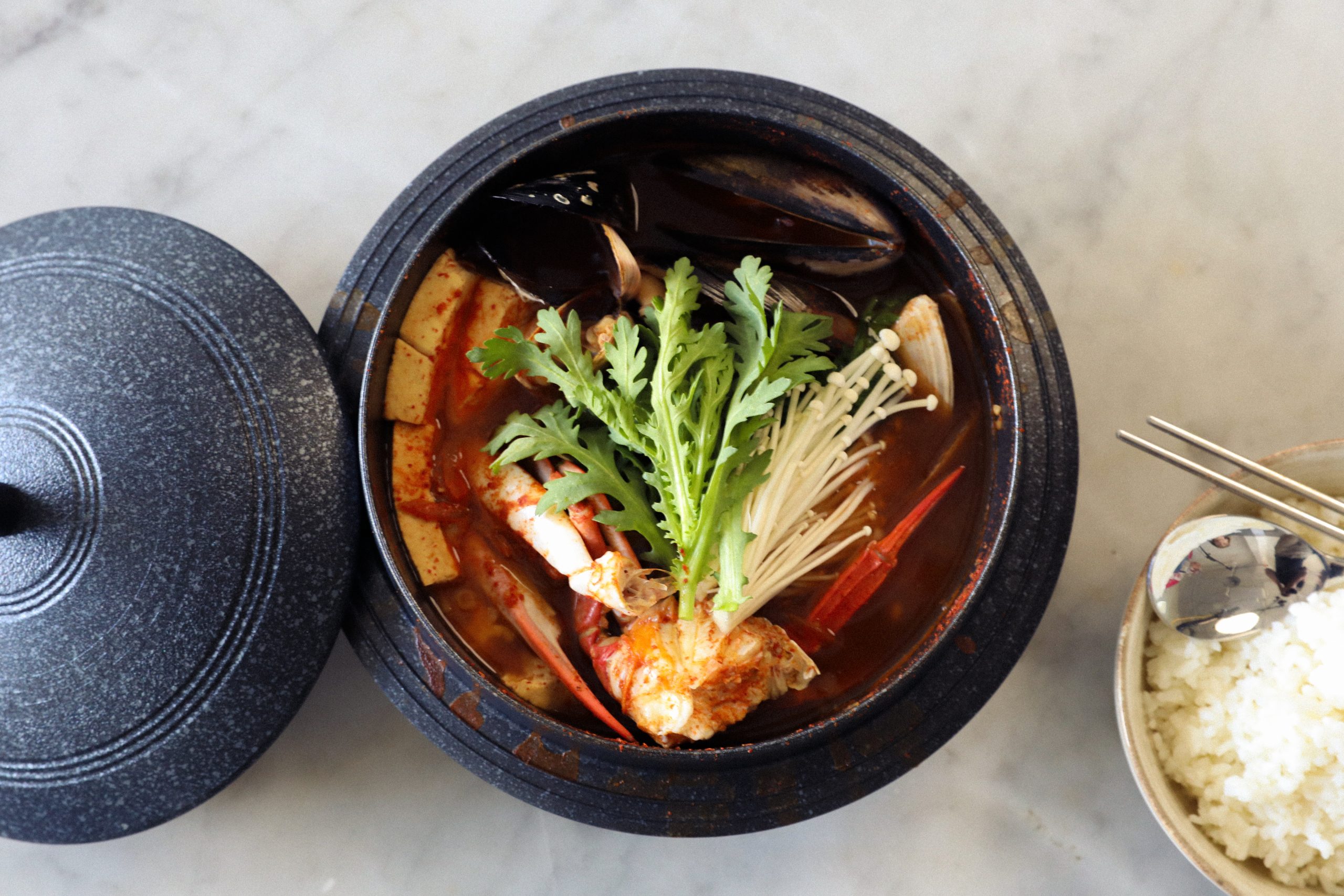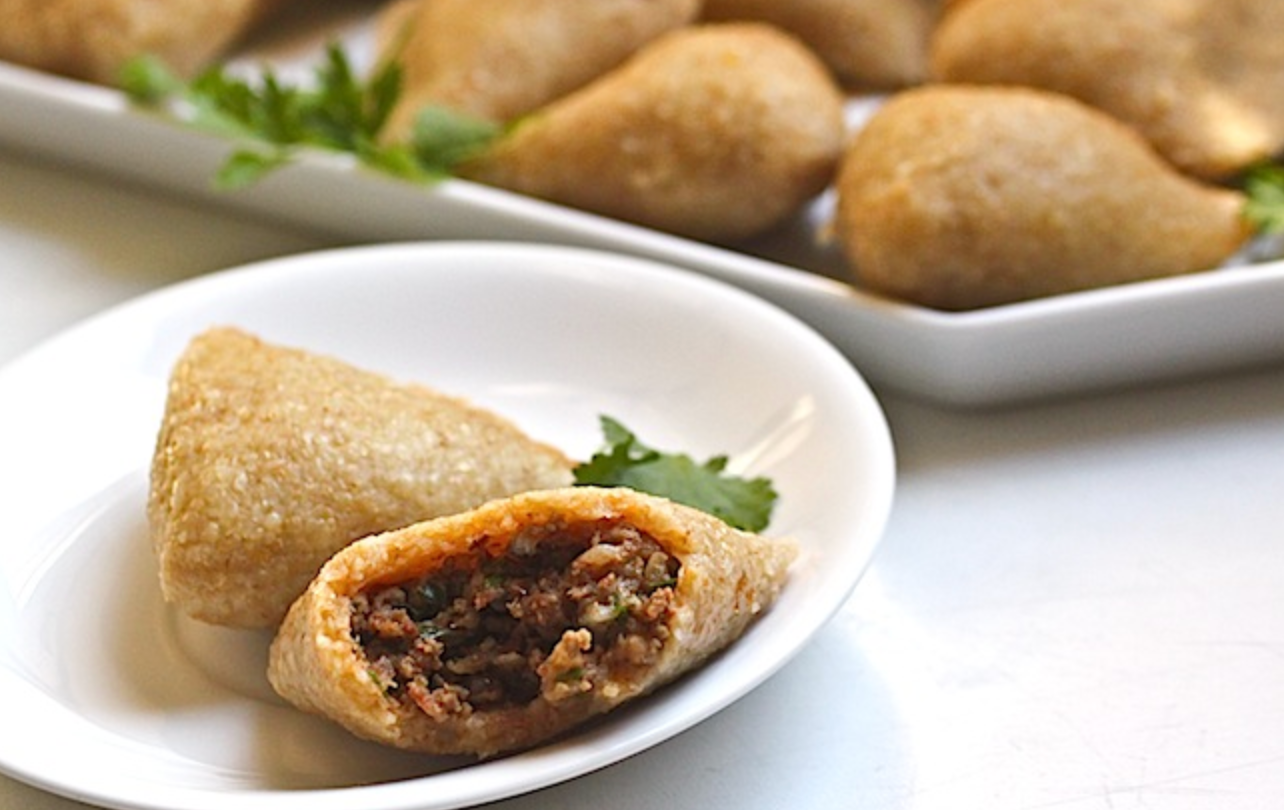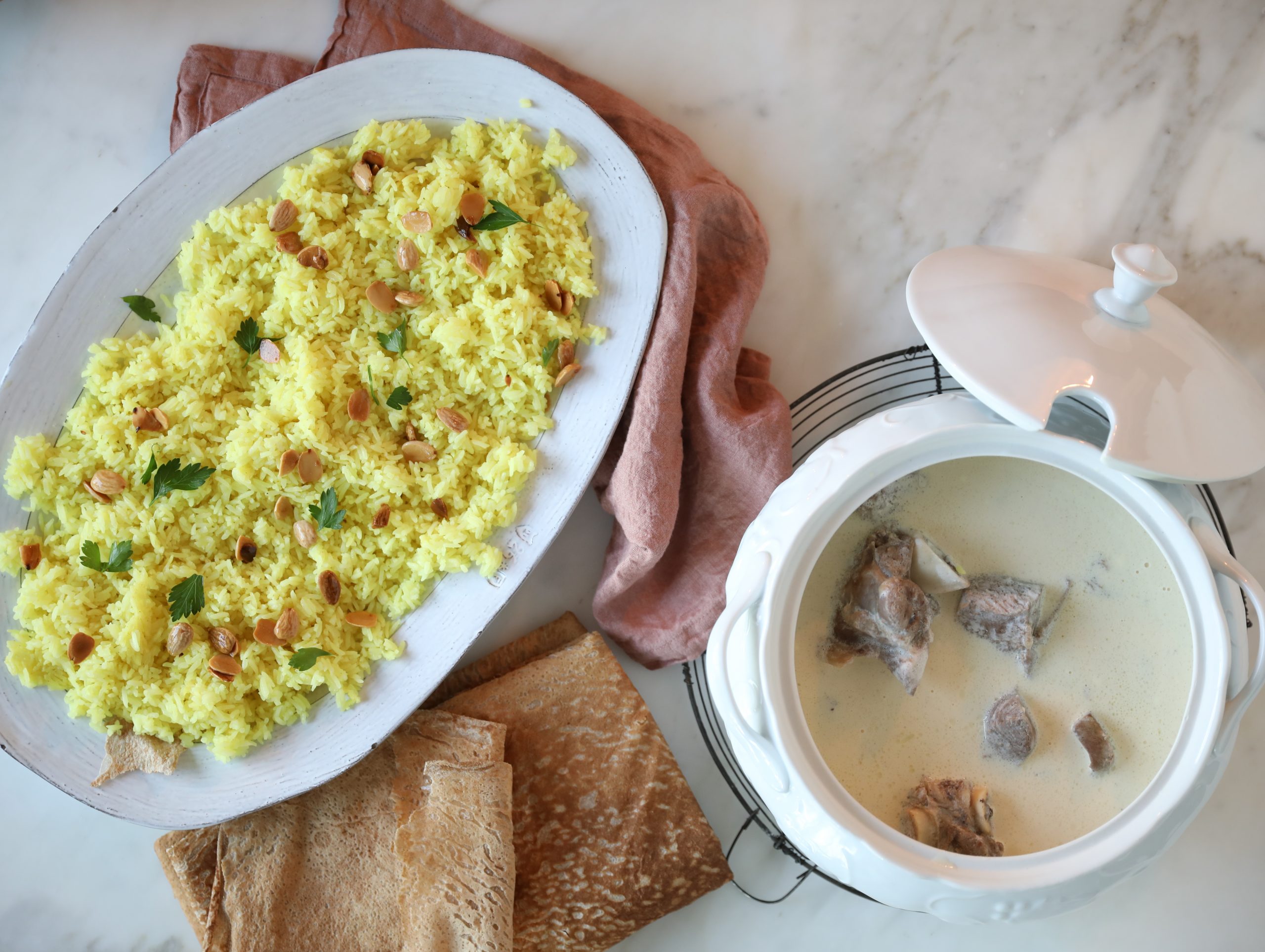Amina’s Haemultang (Fish Stew)

@aminaelshafei
Haemultang is a deliciously wholesome Korean soup made of an array of seafood boiled in a spicy broth. Quite often it is cooked in a stone pot so that it remains hot even whilst served at the table but sometimes, it is continuously cooked on a portable stove at the table, especially when there are numerous diners.
My mother is Korean and my father is Egyptian. They met in Riyadh in the 1970s when they were both working as expats in Saudi Arabia, my mother as a nurse and my father as an accountant. Theirs was a mixed marriage which they say was actually quite common at the time when Saudi Arabia was opening up to the outside world and lots of expats and cultures mixed together.
Mum is a convert. Islam didn’t really exist in Korea when she was growing up but she learned a lot about it living in Saudi and meeting my dad. Forty or so years later, with immigration and expat workers, there’s an estimated 100,000 Muslims in South Korea. The majority live in Seoul, the capital, where my mum grew up and my grandmother is still. But there’s also a few mosques around the country and since 2004, the Ministry for Foreign Affairs has actually held an annual Iftar during Ramadan.
For me, it’s a great privilege having the two different heritages; the opportunity to visit extended family in both countries and being able to inherit two very different cuisines. I think for my parents it’s been enriching too. Dad does lots of interfaith work and is the lead Chaplain for NSW (New South Wales) Health and for UTS, The University of Technology Sydney.
Haemultang – Korean fish stew – is a delectable soup but this dish is even more wonderful and personally special as it holds sentimental memories for me – both of the home I grew up in and my travels to my mother’s homeland.
There is no set recipe for Haemultang in my mother’s kitchen or in Korea although the components of the broth are generally made with gochujang (fermented chili paste), gochukaru (dried chili flakes or powder) and a fragrant stock usually made from seafood, anchovies or beef.
When my mother used to make her version of Haemultang at home, she often made it with blue swimmer crabs, prawns and whichever white fleshed fish fillets were fresh from the local seafood shop. But there is no prerequisite for the type of seafood used. The choice of seafood can vary depending on what you personally like or what’s available, although a variety of shellfish is recommended as the cooking of the shellfish intensifies the flavour of the broth.
When I travelled to South Korea in 2014, I travelled to Busan, the seafood capital and had a ridiculously good pot of Haemultang which reignited my love for it! Then in 2016, my husband and I travelled to Seoul as part of our honeymoon trip and lo and behold, our first dinner was Haemultang! Both versions had exotic shellfish including abalone and sea snails.
Here’s my version of Haemultang derived from my experience in Busan. I find that the combination of crab, pipis, prawns, mussels and firm white fleshed fish such as ling make a fabulous Haemultang.
Head to your local Korean grocer to get your hands on gochujang (the fermented chili paste), and gochukaru (the dried chili flakes or powder) – and if you’re not too keen on a very spicy broth, feel free to lessen the amount of these Korean ingredients. The chrysanthemum leaves are used a lot in Korean, Chinese and Vietnamese cuisines and can be found at pretty much any Asian grocers.
And remember, there are no real rules. Take the opportunity to travel to your local fish market – such as the Sydney Fish Markets – to explore your local seafood variety. You can’t go wrong and you may end up trying some new and delicious seafood for the first time.
Amina El Shafei
May 2021
Share this story

Mix seasoning ingredients until well combined. Leave aside.
In a semi-shallow stone/clay pot (use one with a lid), bring the stock of choice to the boil. Whilst waiting for the stock to boil, ensure that all the prepared seafood have any excess moisture dried off with a paper towel. Slice the ling fillet into 3cm cubes.
Once the stock is boiling, lower the heat to a simmer. Carefully arrange the tofu, sliced onions, fish fillets and the remaining seafood, then increase to high heat and cover. Cook for 3-5minutes until the seafood is just cooked. Ensure that all the mussels and vongole or pipis have opened – if there are any that have not, discard.
Just before serving, arrange the chrysanthemum leaves and enoki mushrooms over the centre of the haemultang. Serve immediately with individual portions of hot rice.




